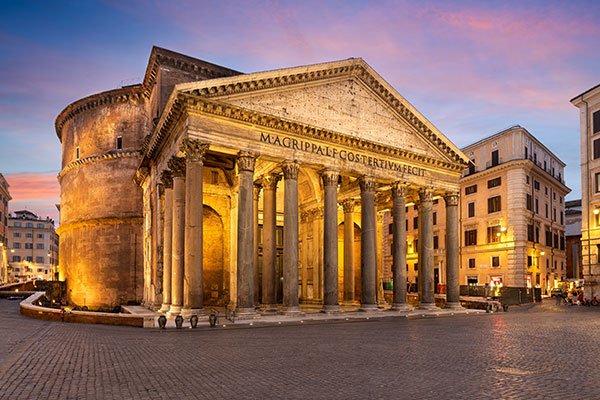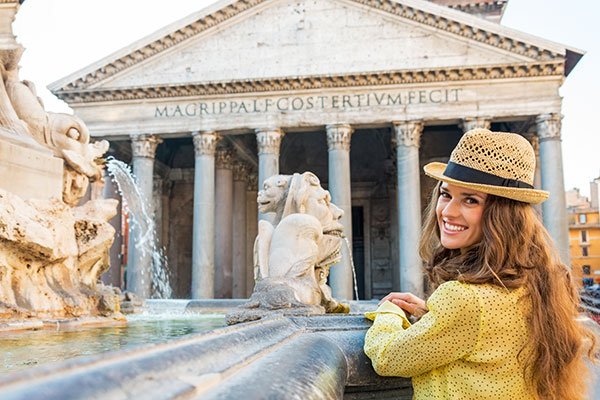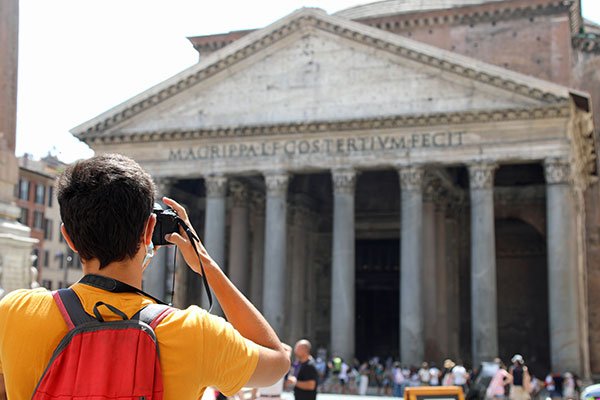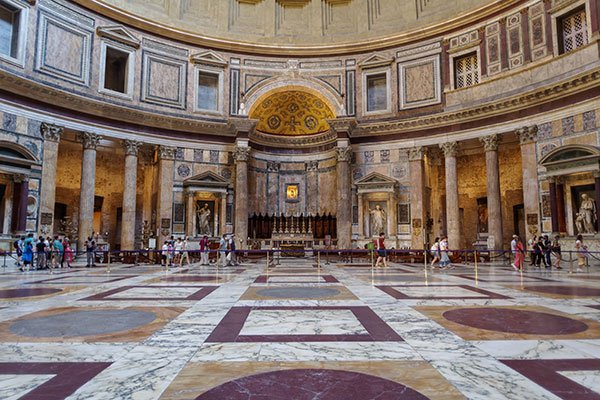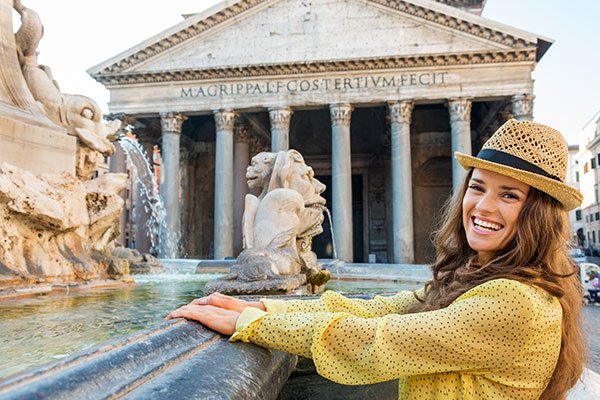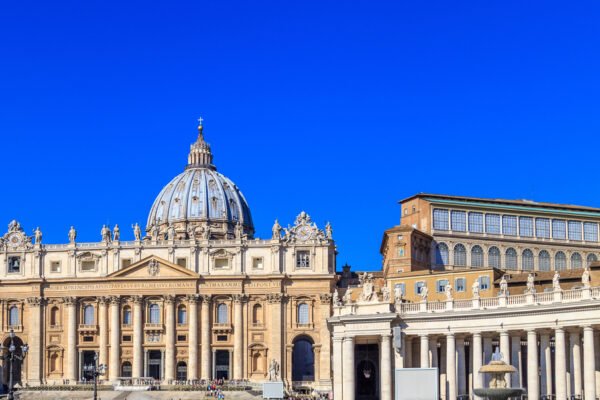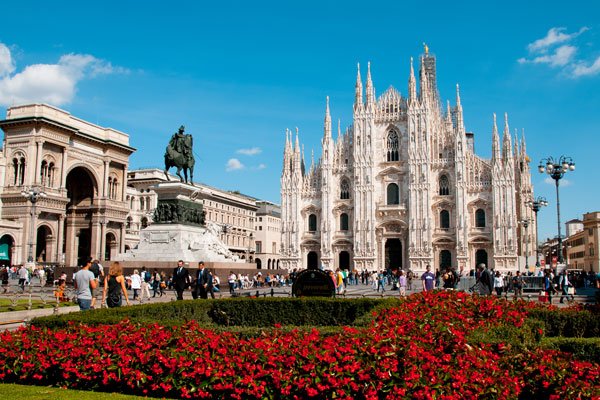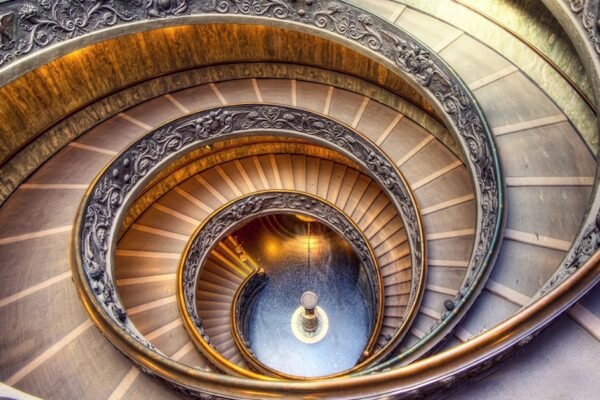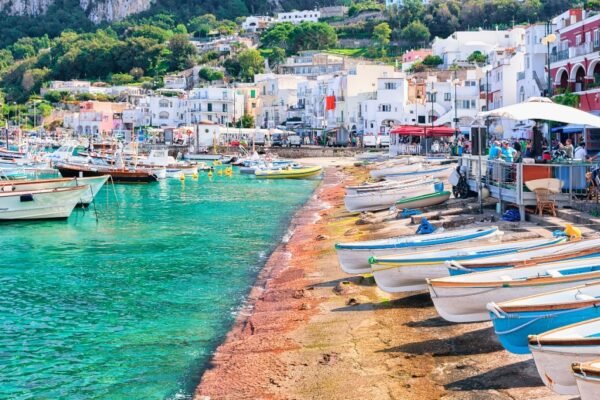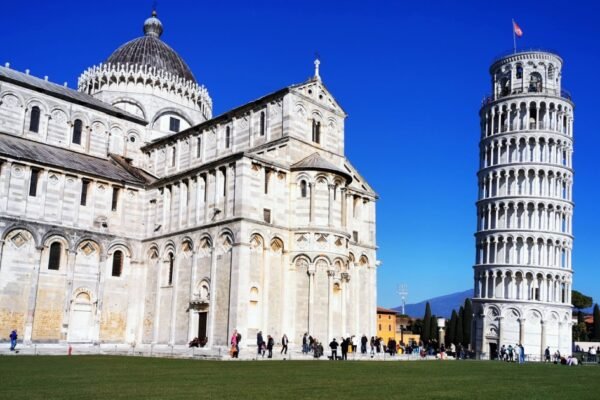Pantheon in Rome: History and Facts
Pantheon in Rome: History and Facts
Standing tall in the heart of Rome, the Pantheon is an architectural marvel that has captivated visitors for centuries. Built in the 2nd century A.D., this engineering masterpiece boasts the largest unreinforced concrete dome in the world, a feat that still amazes architects and engineers today.
Explore the Pantheon’s rich history and uncover the secrets of its construction. Discover the Pantheon’s role as a temple, its transformation into a church, and its enduring legacy as a symbol of Rome’s architectural prowess.
Let’s start with a historical timeline, followed by a brief overview of the history and the architecture.
Quick Facts about the Pantheon in Rome
- Address: Pantheon, Piazza della Rotonda, 00186 Roma
- Original Name: Santa Maria ad Martyres (Sancta Maria Rotunda/La Rotunda)
- Capacity: Up to 8,000 people
- Length: 60.9 meters (199.8 feet)
- Width: 46.2 meters (151.6 feet)
- Height: 43.3 meters (142.1 feet) (interior height to top of dome)
- Total Area: 1,535 square meters (16,546 square feet)
- Construction Started and Finished: 114 A.D. – 125 A.D.
- Architects: Unknown, but possibly Apollodorus of Damascus
- Architectural Style: Blend of classical Greek and Roman elements
- Building material: Concrete, brick, marble
- Renowned for its: The world’s largest unreinforced concrete dome and its oculus
- UNESCO World Heritage Site since: 1980
- Number of Visitors per Year: Around 7 million
10 Facts About The Pantheon in Rome
Explore intriguing insights about the Pantheon as we unravel these captivating tidbits:
The World’s Largest Unreinforced Concrete Dome
The Pantheon’s dome is the world’s largest unreinforced concrete dome. It spans 43.3 meters (142 feet) and weighs around 5,000 tons. Crafted from “opus caementicium”, a robust blend of volcanic ash, sand, and lime, this innovative concrete required no additional reinforcement, showcasing remarkable engineering prowess. Standing for over 1,800 years, the dome remains in excellent condition, a testament to Roman engineers’ enduring skill and ingenuity.
Source Of Natural Light
The Pantheon’s central oculus, measuring 8.3 meters (27 feet) in diameter, serves as the temple’s exclusive natural light source. This unique design allows sunlight to enter in a dramatic way, creating a moving beam that illuminates various interior sections throughout the day. Beyond its practical function, the oculus holds symbolic significance, representing the sun, the universe’s eye, and the connection between earthly and heavenly realms. Romans believed it allowed gods to observe earthly activities, leading to prayers and offerings directed through this celestial opening.
Dedicated To All Roman Gods And Goddesses
The Pantheon was originally dedicated to all Roman gods and goddesses. The name “Pantheon” comes from the Greek words “pan” meaning “all” and “theion” meaning “god.” The temple was built to honor all of the deities in the Roman pantheon, and it was the largest and most important temple in Rome at the time.
Conversion
In the 7th century AD, the Pantheon underwent a significant transformation, shifting from a Roman temple dedicated to pagan worship to a Christian basilica named Santa Maria ad Martyres. Gifted by Byzantine Emperor Phocas to Pope Boniface IV in 609 A.D., this change symbolized the rise of Christianity in Rome. The conversion involved removing pagan symbols, installing Christian relics, and repurposing spaces for altars, shrines, and tombs. The once-symbolic oculus became a divine source of light for Christian rituals, marking a profound alteration in the Pantheon’s cultural and religious role.
The Removal Of The Bronze Tiles
In 1625, Pope Urban VIII sparked controversy by removing bronze tiles from the Pantheon’s dome and portico to forge cannons. This act, deemed vandalism, was met with public outcry as the bronze, considered valuable, was believed to be taken for greed rather than defense against the Turks, as claimed by the Pope. The removal, damaging the dome, remains a contentious chapter in art theft history. Although the tiles were later replaced with lead in the 18th century, the Pantheon’s original splendor has never been fully restored, marking a significant loss to its architectural beauty.
The Loss Of The Bronze Doors
The Pantheon’s original colossal bronze doors were adorned with Roman mythology reliefs and measured 4.45 meters by 7.53 meters. They were regarded as valuable art. However, they were melted down sometime between the 7th and 10th centuries A.D. to forge cannons for Castel Sant’Angelo in Rome. Although the exact removal date is unclear, it coincided with Rome’s political unrest. The loss was substantial, but replacement doors, crafted in the 16th century, now contribute as impressive works of art integral to the Pantheon’s architectural legacy.
Source Of Inspiration
The Pantheon has been a source of inspiration for many architects throughout history. Its innovative design, particularly its massive concrete dome, has influenced the construction of numerous buildings around the world. Here are some examples:
> Santa Maria del Fiore, Florence, Italy, by Brunelleschi, an Italian architect, designer, goldsmith and sculptor in the 15th century
> St. Peter’s Basilica, Rome, Italy, by Michelangelo, an Italian sculptor, painter, and architect in the 16th century
> Basilica Palladiana in Vicenza, Italy by Andrea Palladio, another 16th-century Italian architect.
> Rotunda at the University of Virginia, USA, by Thomas Jefferson, an American statesman and architect in the late 18th century.
> Getty Center in Los Angeles, California, USA, by Richard Meier, a contemporary American architect.
Second Iteration
The current Pantheon in Rome is the second iteration of the iconic structure. The original building was commissioned by Marcus Agrippa in 27 B.C. but was destroyed by fire in 80 A.D. The second structure, constructed by Emperor Hadrian between 118 and 125 A.D., is the one that stands today.
Final Resting Place
The Pantheon is the eternal resting place of several notable figures, including the Italian painter and architect Raphael. His remains were interred there in 1520. The Pantheon also serves as the burial site for the Italian kings Vittorio Emanuele II and Umberto I, as well as Umberto’s queen, Margherita.
Marble Columns
The Pantheon showcases a grand portico with 16 towering monolithic granite columns, each standing at an impressive 12 meters (39 feet). Crafted from durable Egyptian red granite, weighing about 60 tons each, these columns exhibit extraordinary engineering prowess. Their fluted design, featuring vertical grooves, not only enhances aesthetics but also strengthens their structure. Adorned with Corinthian-style capitals, characterized by intricate acanthus leaf ornamentation and volutes, these columns boast both visual appeal and structural integrity. The use of Egyptian red granite underscores the Pantheon’s commitment to enduring beauty and construction excellence.
History of the Pantheon: Chronological Timeline
27 B.C.
Marcus Agrippa, a close friend and advisor to Emperor Augustus, commissions the construction of the first Pantheon, a rectangular temple with a portico and a cella (inner sanctum).
80 A.D.
A fire destroys the first Pantheon.
118 – 128
Emperor Hadrian rebuilds the Pantheon as a circular temple with a massive concrete dome, which is still standing today.
609
Byzantine emperor Phocas gifts the Pantheon to Pope Boniface IV. Pantheon transforms into the Christian basilica Santa Maria ad Martyres.
1520
Famous Italian painter and architect Raphael’s remains is interred in the Pantheon.
1625
Pope Urban VIII orders the removal of the bronze tiles from the dome and portico of the Pantheon (and probably the original bronze doors, too), melting them down to forge cannons.
18th Century
The bronze tiles are replaced with lead.
20th Century
Pantheon becomes a tourist attraction.
1980
The Pantheon is designated a UNESCO World Heritage Site.
Today
The Pantheon is one of the most popular tourist attractions in Rome and is still used for religious ceremonies.
History of the Pantheon in Rome: In-Depth Summary
Discover the rich history of the Pantheon with our thoughtfully crafted overview. Uncover the origins, evolutions, and profound cultural significance of this ancient masterpiece.
Architecture of the Pantheon in Rome


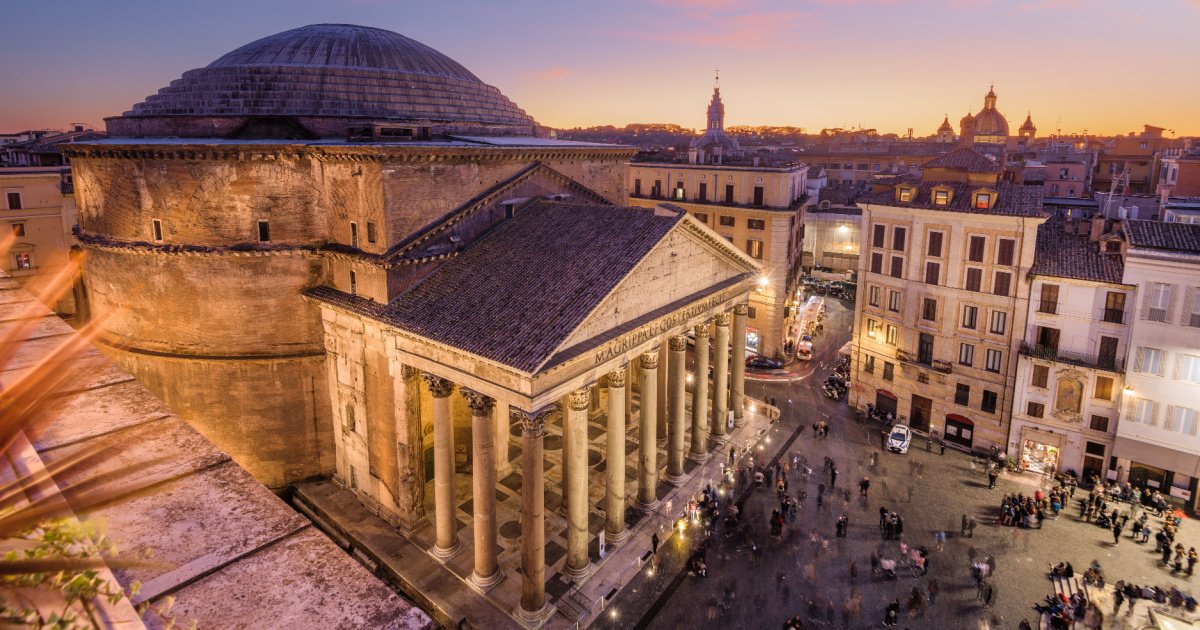
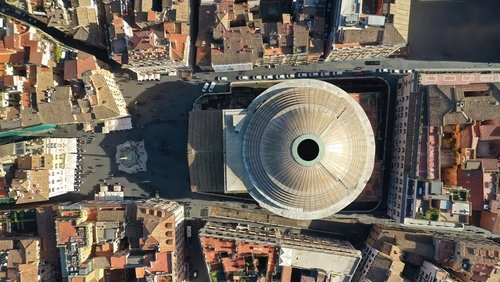
Standing as a testament to the architectural brilliance of ancient Rome, the Pantheon stands as one of the most awe-inspiring structures in the world. Probably designed by the renowned architect Apollodorus of Damascus under the reign of Emperor Hadrian, the Pantheon seamlessly blends classical Greek and Roman architectural elements, resulting in a masterpiece that has captivated observers for centuries.
The Pantheon’s defining feature is its massive concrete dome, the largest unreinforced concrete dome in the world. Measuring an impressive 43.3 meters (142 feet) in diameter, the dome’s ingenious construction technique, utilizing lightweight concrete and hidden ribs, allowed for its remarkable span and durability.
At the center of the dome is the Oculus, an 8 meter-wide (29-ft) circular opening that allows natural light to flood the interior, illuminating the temple’s rich artistic embellishments.
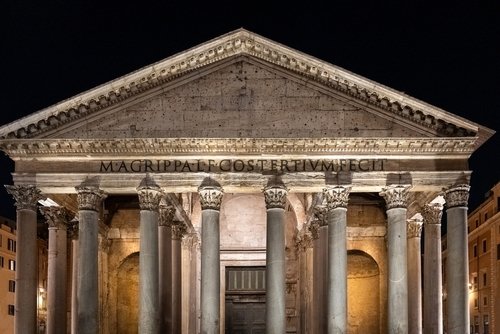
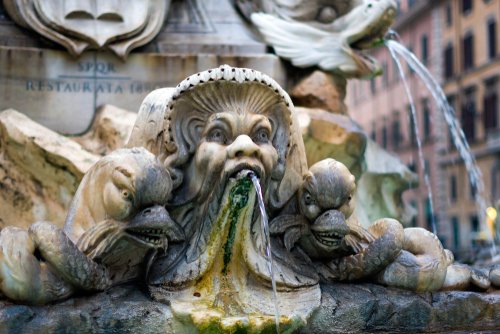
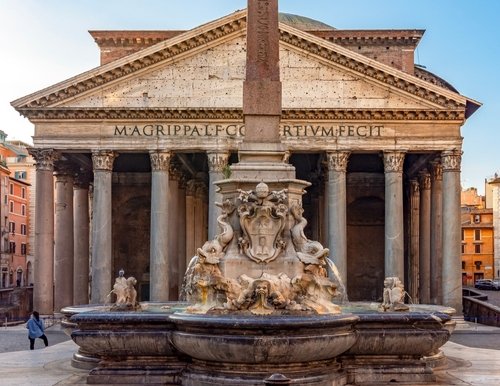
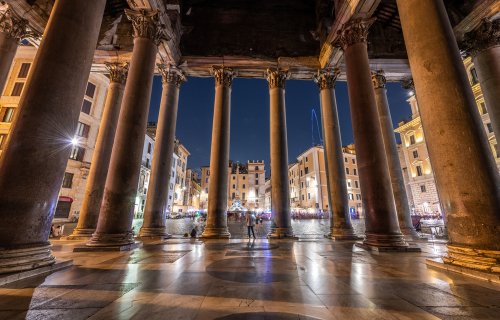
Book Pantheon Rome Tickets & Tours
Explore below your Pantheon Rome ticket options and pick from the finest selection:
Bestseller Pantheon Rome Ticket
Top-Value Pantheon Guided Tour
Most Preferred Pantheon Combo Tickets
>> Check out the best places to eat near the Pantheon in Rome with our restaurant recommendations.
>> Find out how to get to the Pantheon in Rome and useful traveler tips on our dedicated page.

